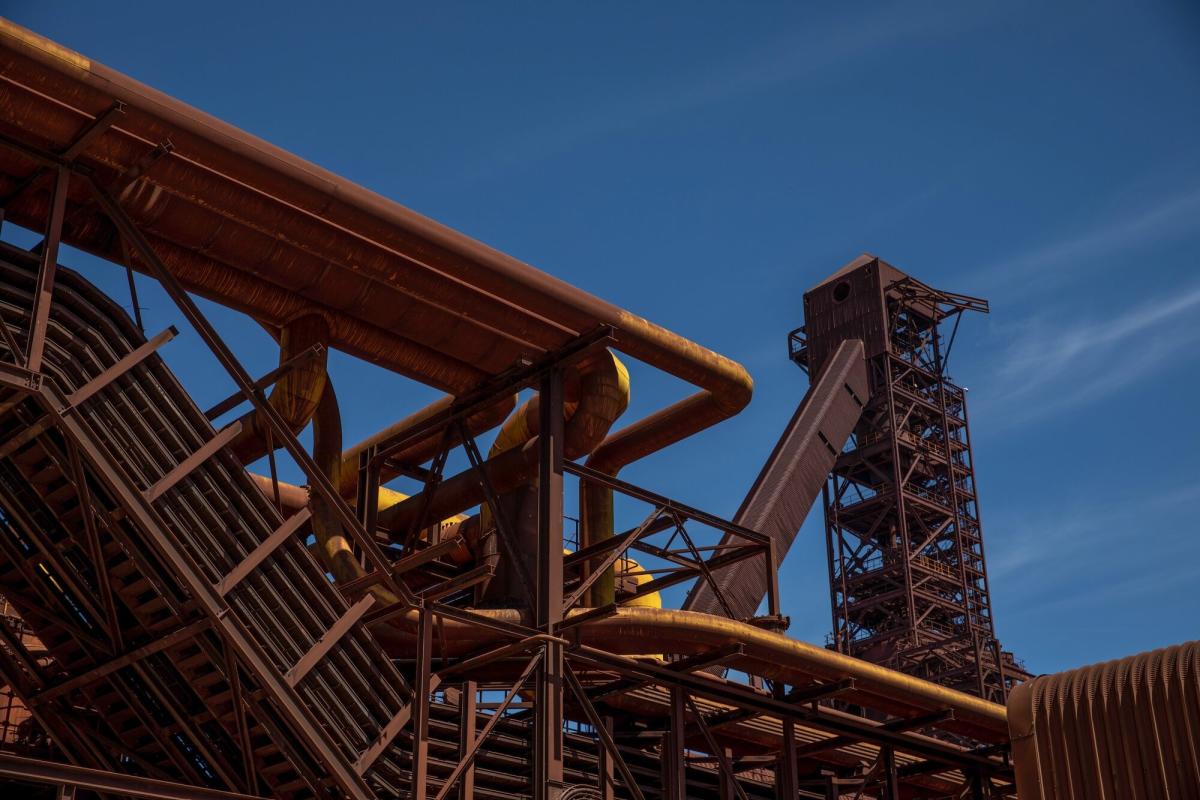
(Bloomberg) — ArcelorMittal SA said it’s up to South Africa to keep crucial steel mills open and questioned the government’s industrial policy.
Most Read from Bloomberg
The company’s South African unit has negotiated with state officials since Jan. 6, when the firm said it planned to close three units including two mills that the country’s automotive, mine equipment and steel-fabrication industries depend on.
ArcelorMittal South Africa Ltd., or AMSA, on Thursday delayed the closures by a month and said it expects to make a final announcement toward the end of February.
“We are not going to carry any further losses on that business,” Chief Executive Officer Kobus Verster said at the company’s headquarters in Vanderbijlpark, south of Johannesburg. “The discussions are active, they are daily. They are actively focused on trying to find a solution.”
The one-time state steel business bought by billionaire Lakshmi Mittal’s company in 2003 has effectively thrown down the gauntlet to the government to address complaints ranging from high power and transport costs, to what it sees as inadequate tariffs on imported steel and unfair support for rivals.
“Electricity is too expensive in South Africa, rail tariffs are too expensive in South Africa, safeguards are not good enough, the scrap discount given to competitors is unfair,” Verster said. “You need to address the structural issues.”
The company may need a rights issue to bolster its finances, Verster said, prompting its stock to drop as much as 17% to 93 South African cents in Johannesburg, the lowest since December 2023. It traded at 1 rand at 3:28 p.m.
The closure announcement drew pleas from the industries to intervene.
They argue the plants, which also supply construction steel, are key to the health of their own operations because imports would be too costly and less reliable.
Verster said the Vereeniging and Newcastle mills, which indirectly support more than 100,000 jobs, supply between 350,000 tons and 400,000 tons of steel products that cannot currently be manufactured by any other companies in South Africa.
While that’s a fraction of the mills’ total production, it consists of the flexible spring steel needed for automotive components and the hollow variety used to make hand-held mining drills essential to South Africa’s deep-level precious metals operations. It’s also key to the 4.8 trillion-rand ($258 billion) infrastructure drive championed by President Cyril Ramaphosa.
Key to ArcelorMittal’s discontent is a government policy that gives its rivals — who use steel scrap rather than the iron ore that AMSA consumes — a 30% discount on the international price of their main raw material.
Industrial Dilemma
Also, the government’s Industrial Development Corp., despite being AMSA’s biggest shareholder after its parent company, has buoyed a number of its rivals by investing in them.
Now, the IDC has provided AMSA with an emergency loan of 380 million rand and is in talks about backing the potential rights offer and offering further financial support.
“The fact that the IDC has a dilemma is their problem — they have to solve it,” Verster said. “We will not take any more financial risk.”
The IDC, which owns about 8% of AMSA, didn’t respond to a request for comment.
Newspaper reports about a financial bailout from the government were inaccurate and AMSA hadn’t received any “serious” offers for its assets, Verster added.
“We don’t need to spend time on issues where there is no funding behind them and there is no credible offer,” he said.
The company, which has annual revenue of about 40 billion rand, now has a market value of just 1.2 billion rand, down from a peak of 116 billion rand in 2008.
Verster laid out an array of investments the company could pursue once it stops hemorrhaging money from the unprofitable units, one of which has run for more than a century.
They include a 1.5-million-ton-per-year electric-arc furnace, a 200-megawatt solar-power plant to reduce electricity costs and reopening the idled Thabazimbi iron-ore mine in 2027. The company could also start producing so-called green direct-reduced iron for export from its shuttered Saldanha steel milling using hydrogen by 2030, he said.
“Without the longs, the business is in good shape,” Verster said, using an industry term to refer to the types of steel the struggling mills produce.
Sign up here for the twice-weekly Next Africa newsletter
Most Read from Bloomberg Businessweek
©2025 Bloomberg L.P.
https://s.yimg.com/ny/api/res/1.2/Z.Q4f7P625LcUfcf9g6aTQ–/YXBwaWQ9aGlnaGxhbmRlcjt3PTEyMDA7aD04MDA-/https://media.zenfs.com/en/bloomberg_markets_842/0f81e3fdb418f653c488356ca49468c7
2025-02-06 07:41:30